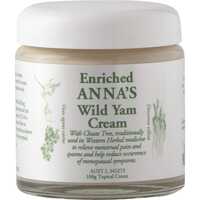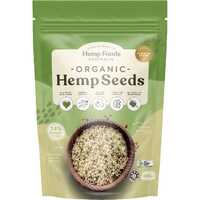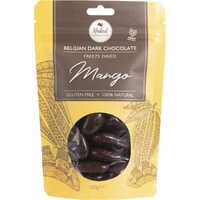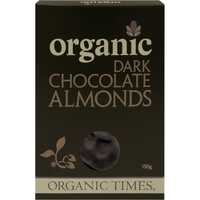With Easter just around the corner, it's time to look at chocolate and its alternatives. Chocolate products vary significantly in form and flavour, and their nutritional benefits also differ widely. While all chocolate products are made from cacao, which is very healthy in moderation, most commercial chocolate also features lots of sugar. If you want to enjoy healthy chocolate or discover new alternatives, it's important to be aware of these differences and how they impact your health.
Let's take a look at chocolate in its many forms, from pure cacao to cocoa powder and sweet chocolate. We'll dive into history, analyse nutrition, and review healthy chocolate alternatives.
A Short History of Chocolate
Chocolate is one of the most popular foods in the entire world. The history of chocolate stretches back thousands of years, and in the last few hundred, it has influenced global trade like few other commodities. Cacao was originally domesticated in South America 5,000 years ago, in the early civilisations of the Olmecs and Mayans. The "food of the gods" started out in the Upper Amazon region before spreading across Central America, into Spain, and throughout the world. By the early 1600s, cacao could be found across Europe, and the entire region was under the influence of "chocolate mania."
The modern form of chocolate began around the same time, with a Dutch chemist inventing a processing technique that converted cacao into cocoa powder. Not only did this process increase shelf life and affordability, but it also laid the groundwork for entirely new forms of chocolate. Alkaline salts were introduced to reduce bitterness, natural fats were removed, and sugars and flavours were added in a variety of inventive combinations. While these alterations made chocolate more popular, increased sweetness and additional processing also made chocolate less healthy. Most of today's chocolate could be described as sweet chocolate, and that is where the problem begins.
Different Types of Chocolate
Not all chocolate is the same, with varying proportions and processing methods creating a range of chocolate forms. To understand the health benefits and risks of chocolate, it's important to analyse the differences between these types.
Cacao vs. Cocoa
Before we review commercial chocolate, it's important to understand the difference between cacao and cocoa. While similarities in spelling are enough to confuse anyone, these two words describe different forms. Cacao is fermented, dried, and roasted to create cacao nibs, which are ground into a paste called cacao liquor. This material is then pressed, which separates the cocoa butter from the solid content. The solid material is then dried into cocoa powder, which is used to create chocolate products. This process leaves out some of the healthy fats, antioxidants, and micronutrients.
Cocoa solids vs. cocoa butter
When chocolate products are created, cocoa solids are separated from cocoa butter and dried into cocoa powder. Unlike cacao and cocoa, the terms cacao butter and cocoa butter are often used to represent the same thing. Cocoa butter is used by many chocolate makers, and it plays a central role in white chocolate products. Adding extra butter makes chocolate creamier, and it's also used in cooking as it's quicker to melt. Cocoa butter has lots of heart-healthy monounsaturated and polyunsaturated fats, and it's a good source of magnesium, iron, vitamin E, and antioxidants.
Dark chocolate
Dark chocolate is the purest form actually sold as chocolate. It is produced by adding fats and sugars to the cocoa mixture in a variety of proportions. While sugar is always added and dark chocolate is classified as sweet chocolate, the amount of cocoa left in the mixture varies significantly. Minimal ratios differ between nations, with a 15% cocoa concentration needed in the US and 35% required across Europe. Many commercial products go well above this number, including some that promise 85% or 90% cocoa solids.
Milk chocolate
The vast majority of commercial chocolate products fall under this banner. Milk chocolate contains cocoa solids along with milk powder or condensed milk. They're also likely to contain lots of sugars, flavours, and additives. Once again, there are minimal cocoa requirements in some jurisdictions, including 20% in the UK and 25% in Europe. Milk chocolate products are often highly processed, and more often than not, they contain an ultra-high percentage of sugar.
White chocolate
While it's a big favourite among many, it's debatable whether white chocolate should even be called chocolate. While it's similar in texture to milk and dark chocolate, it doesn't contain any cocoa solids whatsoever. Instead, white chocolate uses a combination of cocoa butter, milk solids, carbohydrate sweeteners, and other ingredients. Much like milk chocolate, white chocolate is likely to contain high levels of sugar and numerous additives.
Nutritional Profile of Chocolate
As you can see from the information just presented, chocolate products vary widely. Vast differences in cocoa solids and fats affect the nutritional profile of products, not to mention the addition of sugars, flavours, and additives. For these reasons, a precise nutritional profile of commercial chocolate is pretty much impossible. Instead, you have to go back to the source and analyse pure cacao. When making purchasing decisions, you need to account for cocoa proportions, sugars, and additives by reading individual product data sheets.
Cacao has the following nutritional profile, based on daily value (DV) percentages and a portion size of 28 grams:
- Calories - 72
- Protein - 10%
- Total fat - 4%
- Saturated fat - 10%
- Carbohydrates - 6%
- Dietary fibre - 32%
- Magnesium - 31%
- Sodium - 10%
- Calcium - 5%
- Iron - 22%
- Potassium - 24%
Along with micronutrients, raw cacao also has lots of antioxidants, including polyphenols and the flavonoids catechin, epicatechin, and proanthocyanidin. Not only do these antioxidants help to sweep up free radicals and fight disease, but they may also help to enhance positive mood and boost motivation.
The Health Benefits of Chocolate
Consuming chocolate is not necessarily something to feel guilty about — as long as you choose your products carefully. Among other things, chocolate has been associated with reducing cholesterol levels, enhancing cognitive function, and lowering the risk of heart disease and stroke. Eating a small amount of chocolate every day during pregnancy may even benefit fetal development, and consuming a little dark chocolate during athletic training might help to boost oxygen availability.
The Problem with Chocolate
As you can see, raw cacao has a rich nutritional profile, and chocolate is associated with numerous health benefits. Pure cacao has a very bitter flavour, however, which makes it hard to incorporate into your daily life. Commercial chocolate products are compromised in an entirely different way, with low levels of cacao often swamped by excessive sugars and unwanted additives. Sweet chocolate has been associated with numerous health problems, including weight gain, tooth decay, and reduced bone health.
Chocolate Alternatives
If you want to enjoy the benefits of chocolate without all the sugar, the following alternatives are a great place to start:
Nuts and seeds
Nuts and seeds may not taste much like chocolate, but they fulfil many of the same nutritional purposes. They are rich in magnesium just like chocolate, especially when you choose almonds, cashews, and Brazil nuts. Nuts and seeds also have functional similarities to chocolate because they make great snacks and are easy to eat on the run.
Smoothies and shakes
When you eat fresh fruits, you're much less likely to crave added sugars. Banana is one of the most popular fruits in the world, and it's the perfect smoothie ingredient. Banana is known for its high potassium content, and just like chocolate, it's also rich in magnesium. Combining banana with cacao in your next smoothie is a great way to dampen the bitter taste.
Avocados
Once again, avocado is probably not the first thing you think about when looking for a chocolate alternative. It has lots of magnesium just like cacao, however, along with plenty of fibre, potassium, vitamin B, and vitamin K. Avocado is easy to consume morning, noon, or night — from delicious smashed toast dishes and green salads to stir-fries, sushi, and pasta.
Carob
Carob is the traditional chocolate alternative because it has a similar look and taste. While the fruit of the carob tree has its own unique flavour profile, unlike cacao, it is naturally sweetened. For this reason alone, it can be enjoyed without adding sugar. Carob doesn't offer the same antioxidants as chocolate, but it does have lots of protein, vitamin A, and B vitamins. It even outperforms chocolate in many ways, having more fibre, three times more calcium, and one-third the amount of calories as chocolate.
Whether you're looking for raw cacao powder, low-sugar chocolate products, or healthy snack alternatives, we have everything you need to live a great natural life. Check out the Healthy Being website to browse through our huge selection of products, read our articles, and make an order today for some of the healthiest chocolate products on planet Earth.


 Certified Organic
Certified Organic Vegan Friendly
Vegan Friendly  Vegetarian
Vegetarian Organic Ingredients
Organic Ingredients Dairy Free
Dairy Free Gluten Free
Gluten Free Keto Friendly
Keto Friendly
































